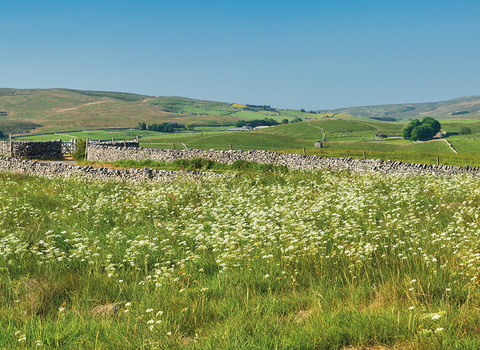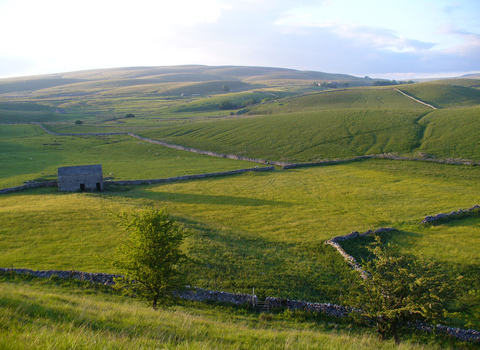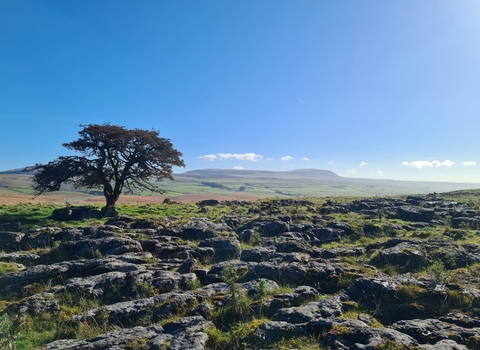Salt Lake Quarry Nature Reserve
Location
Know before you go
Dogs
When to visit
Opening times
Open at all times. We recommend a 1 hour trip for this reserve. For a longer outing combine your visit with a walk around the neighbouring reserve of Ashes Pasture or take in even more of this beautiful area on a longer walk around the Ingleborough NNR.Best time to visit
March to JuneAbout the reserve
Tucked away amidst Yorkshire’s famous Three Peaks, Salt Lake Quarry is a calming, secluded place where you can see a surprising variety of habitats: species-rich limestone grassland, marshy grassland, a pond, bare limestone and willow scrub. The shady areas are a tangle of bryophyte-covered scrub and fern-rich rock faces.
The grasslands sport a wonderful palette of colours, starring ox-eye daisy, water avens, bird’s-foot trefoil, marsh valerian, common spotted orchid, frog orchid, crane’s-bill, blue moor grass, common twayblade, Daphne mezereum and marsh marigold. Moonwort, believed by some to have magical properties, has also been found here and it was the last known Yorkshire site for coralroot orchid.
Contact us
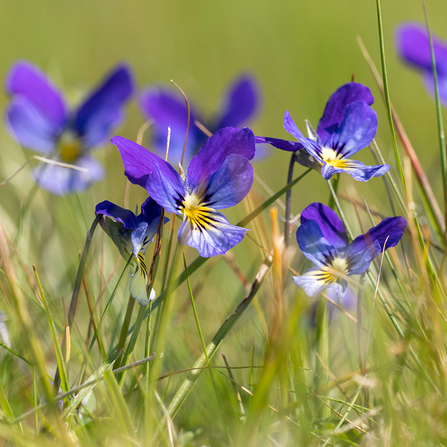
Mountain Pansies - (C) John Potter
New heights for nature
Ingleborough and its iconic foothills are the last stronghold for rare and threatened species that are found nowhere else in the world.
We must protect, restore and reconnect this iconic landscape today before these species are lost forever.
About
This disused limestone quarry on the edge of the Settle to Carlisle railway is now managed for its botanical and invertebrate interest. It is a Site of Special Scientific Interest (SSSI) and home to several nationally rare or scarce plants such as rigid buckler fern on the cliff faces, bird’s-eye primrose in the damp grassland and northern spike rush around the pools. The cliff faces support many ferns such as brittle bladder-fern, hart’s-tongue fern, maidenhair spleenwort and moonwort.
Flowering plants of interest include wood cranesbill, hare’s-tail cottongrass and ox-eye daisy, along with several species of orchid including frog orchid and common twayblade. The damp scrub along the base of the cliff face also supports an impressive number of mosses and lichens.
The site has been undergrazed in the past and scrub and course grasses have encroached on the grassland. Since taking on the lease of the site in 1985 Yorkshire Wildlife Trust has worked to remove non-native species and manage the scrub encroachment. Salt Lake Quarry is now grazed by the Trust’s Hebridean sheep in autumn, which are great at keeping on top of the coarse vegetation.
History
Salt Lake Quarry covers 2ha and was originally excavated by Craven Lime Co. Ltd to produced crushed limestone ballast and building stone for the Settle-Carlisle railway. Since the quarry became inactive a mosaic of habitats have developed leading to its designation as a Site of Special Scientific Interest (SSSI).
Seasonal highlights
- Spring: Plants - Blue moor grass, Water Avens; Invertebrates - Orange-tip Butterfly; Birds - Kestrel, Willow Warbler
- Summer: Plants - Northern spike rush; Bird's-eye primrose; Frog orchid; Common twayblade; Moonwort; Invertebrates - Elephant Hawk Moth Caterpillar
- Autumn: Plants - Hart's-tongue fern
- Winter: Fungi - Lichens, Mammals - Stoat
Directions
Public transport
Nearest train station is Ribblehead, from where it is a 1½ mile walk along the road to the nature reserve.
By car
Off the B6479, one mile south of the B6255 junction (Ribblehead).
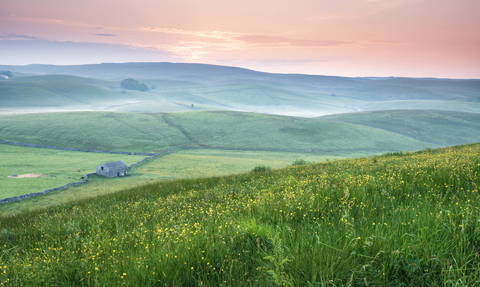
Ashes Pasture - (C) John Potter

